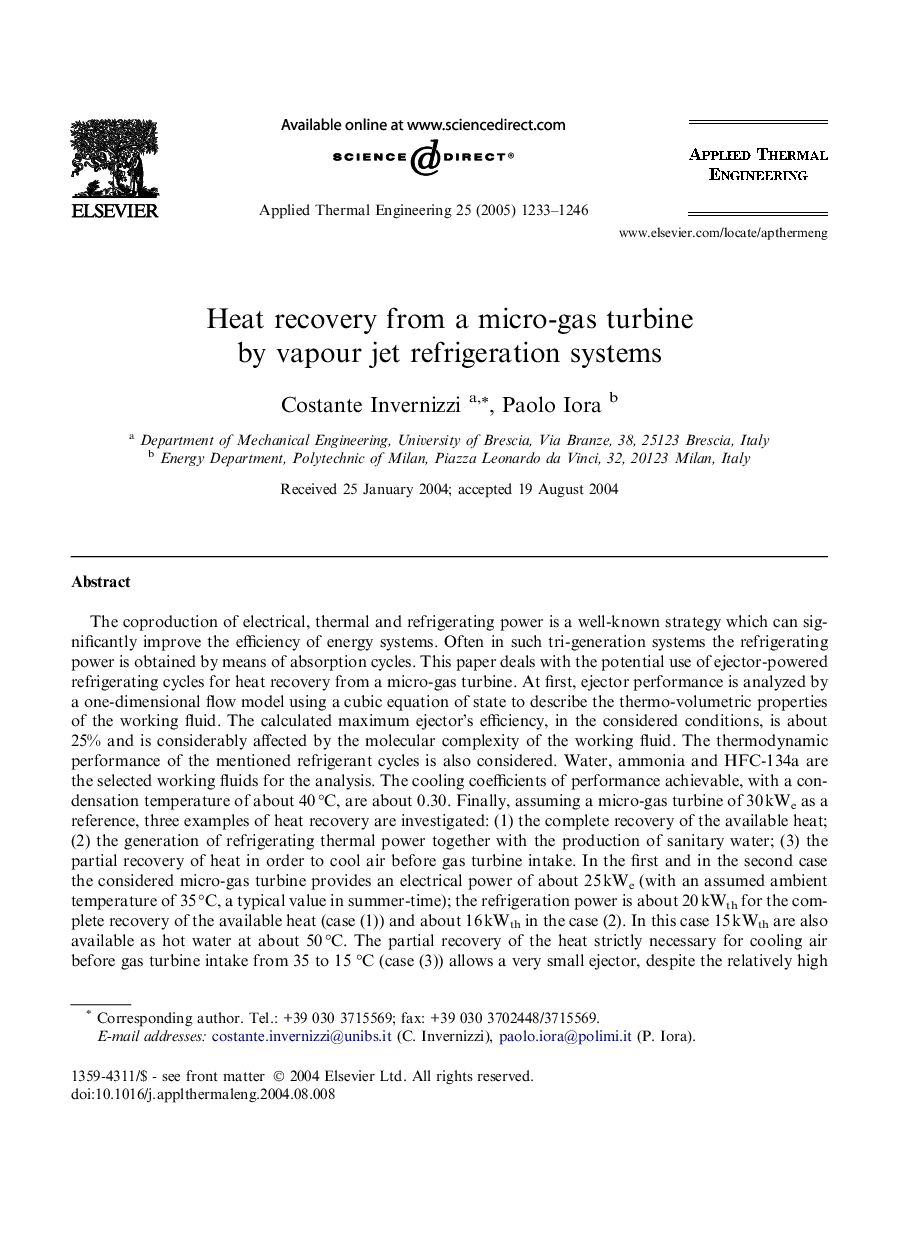| Article ID | Journal | Published Year | Pages | File Type |
|---|---|---|---|---|
| 9690326 | Applied Thermal Engineering | 2005 | 14 Pages |
Abstract
The coproduction of electrical, thermal and refrigerating power is a well-known strategy which can significantly improve the efficiency of energy systems. Often in such tri-generation systems the refrigerating power is obtained by means of absorption cycles. This paper deals with the potential use of ejector-powered refrigerating cycles for heat recovery from a micro-gas turbine. At first, ejector performance is analyzed by a one-dimensional flow model using a cubic equation of state to describe the thermo-volumetric properties of the working fluid. The calculated maximum ejector's efficiency, in the considered conditions, is about 25% and is considerably affected by the molecular complexity of the working fluid. The thermodynamic performance of the mentioned refrigerant cycles is also considered. Water, ammonia and HFC-134a are the selected working fluids for the analysis. The cooling coefficients of performance achievable, with a condensation temperature of about 40 °C, are about 0.30. Finally, assuming a micro-gas turbine of 30 kWe as a reference, three examples of heat recovery are investigated: (1) the complete recovery of the available heat; (2) the generation of refrigerating thermal power together with the production of sanitary water; (3) the partial recovery of heat in order to cool air before gas turbine intake. In the first and in the second case the considered micro-gas turbine provides an electrical power of about 25 kWe (with an assumed ambient temperature of 35 °C, a typical value in summer-time); the refrigeration power is about 20 kWth for the complete recovery of the available heat (case (1)) and about 16 kWth in the case (2). In this case 15 kWth are also available as hot water at about 50 °C. The partial recovery of the heat strictly necessary for cooling air before gas turbine intake from 35 to 15 °C (case (3)) allows a very small ejector, despite the relatively high assumed condensation temperature (50 °C), making it suitable for the integration into typical micro-gas turbine.
Related Topics
Physical Sciences and Engineering
Chemical Engineering
Fluid Flow and Transfer Processes
Authors
Costante Invernizzi, Paolo Iora,
